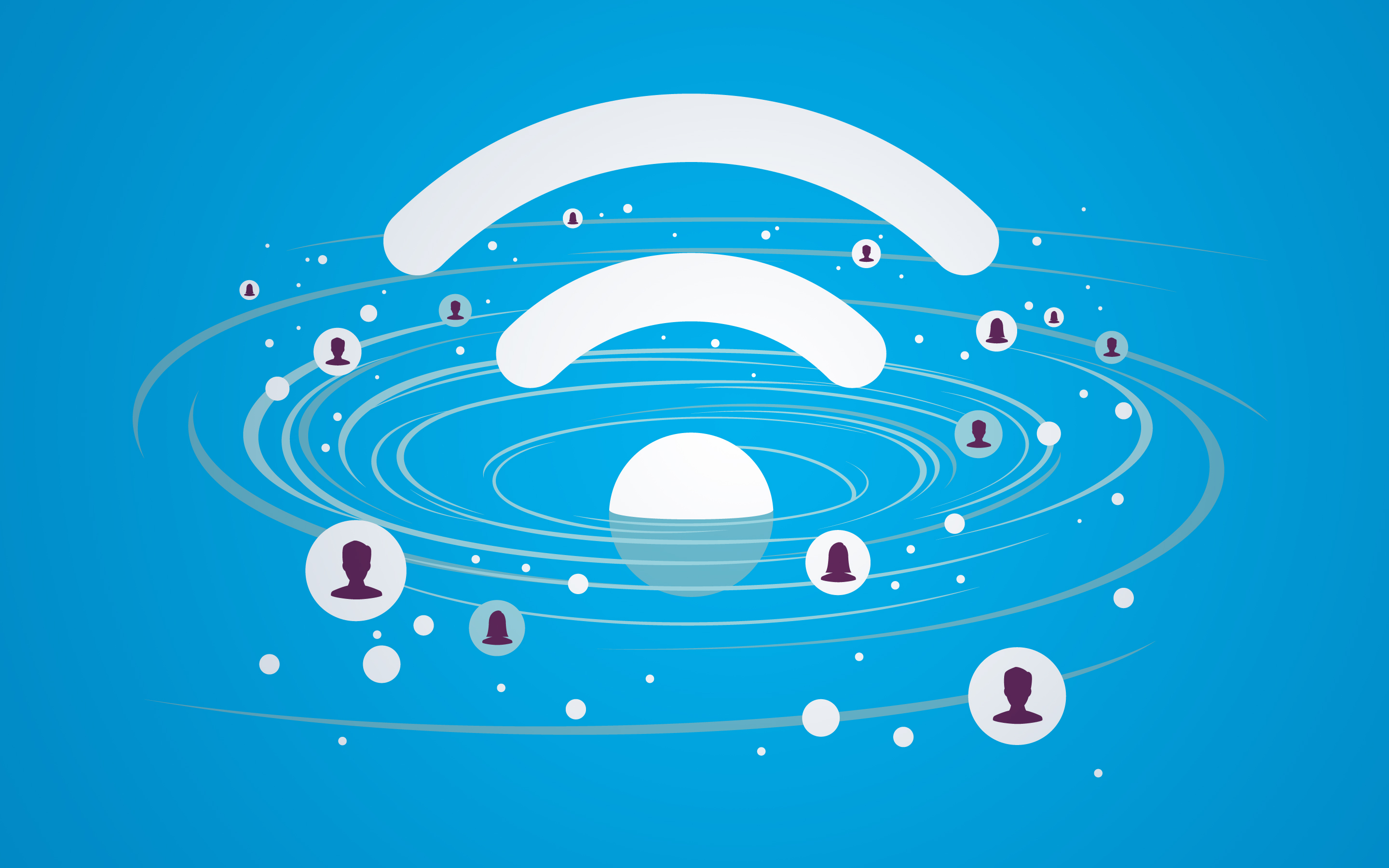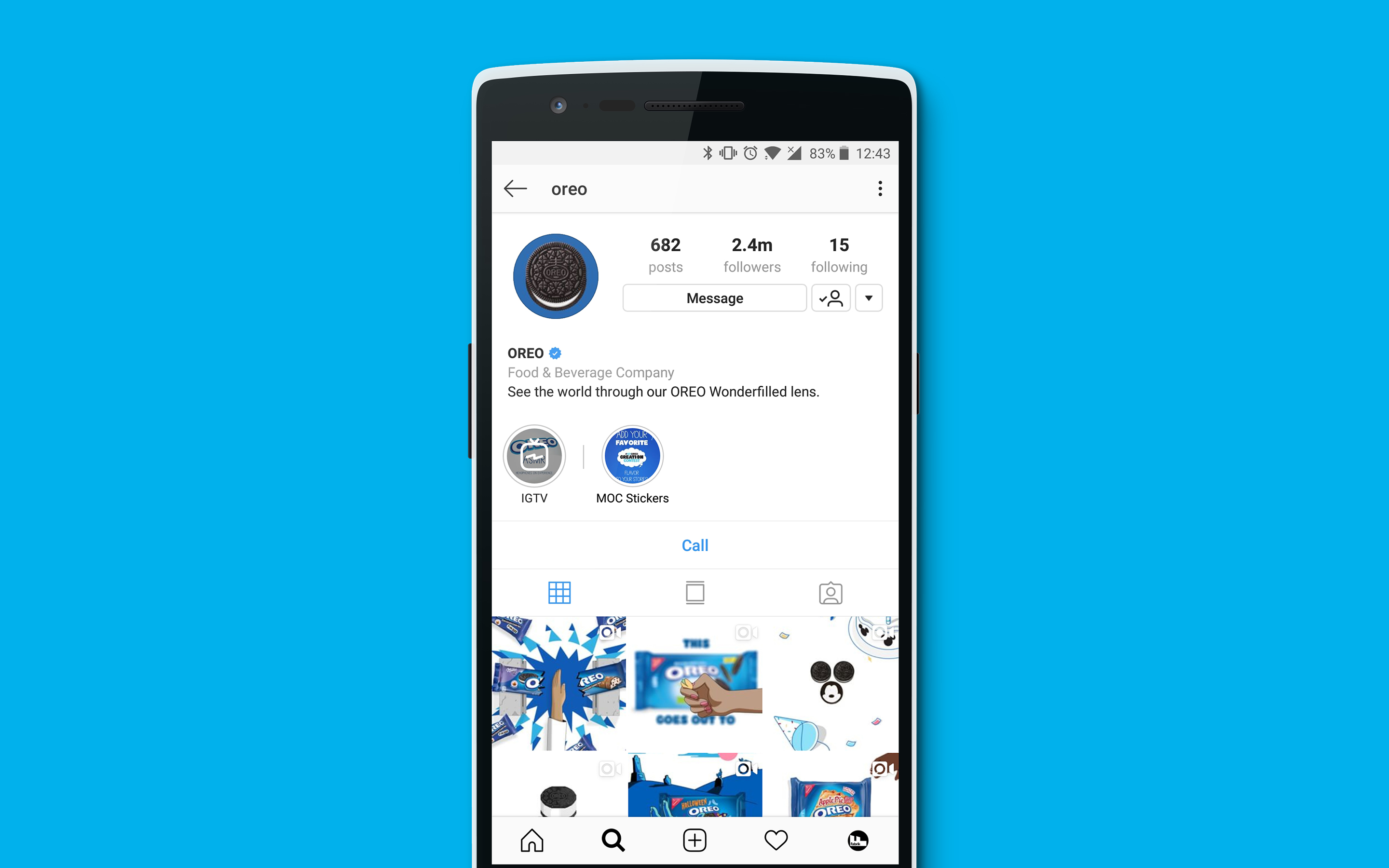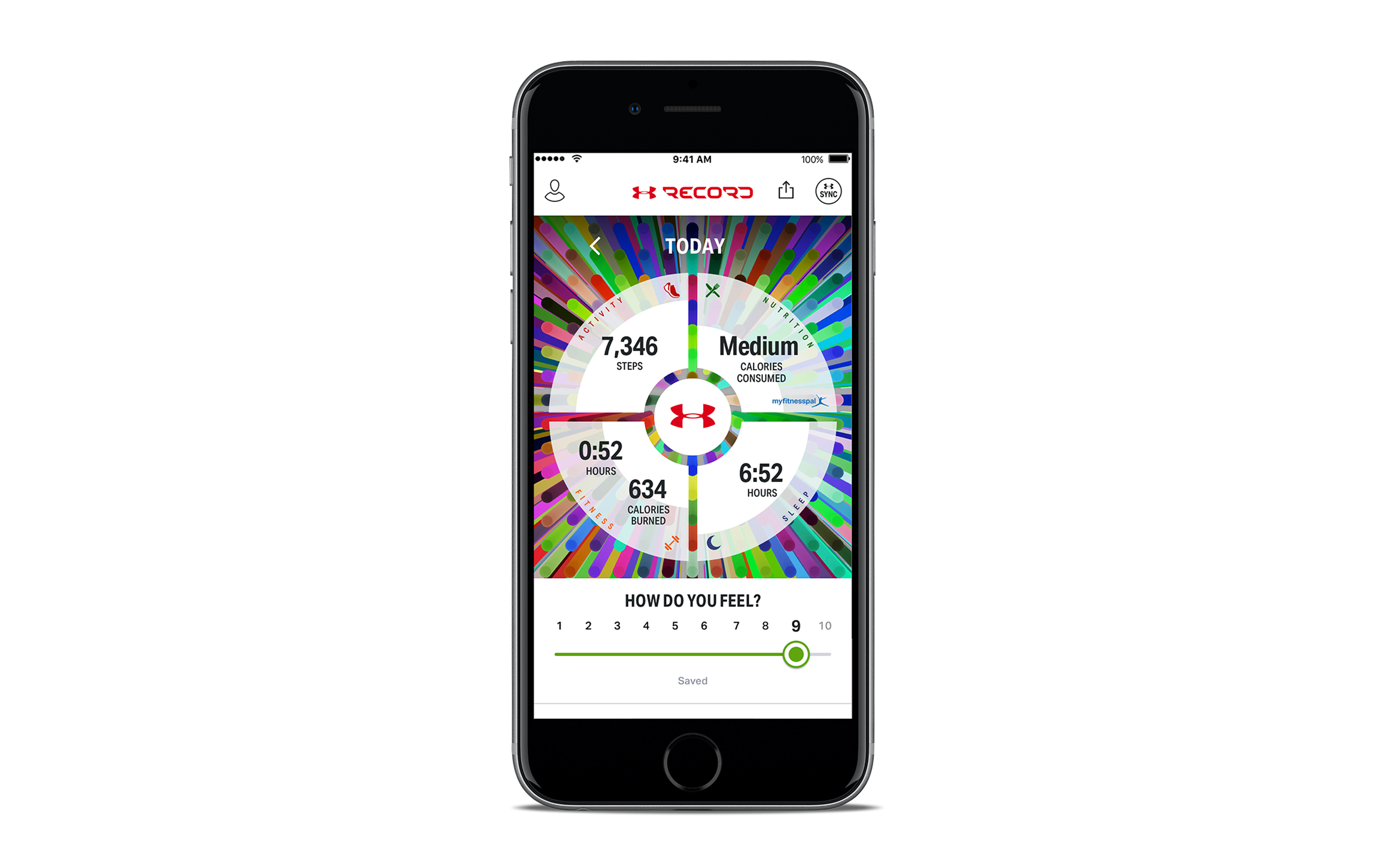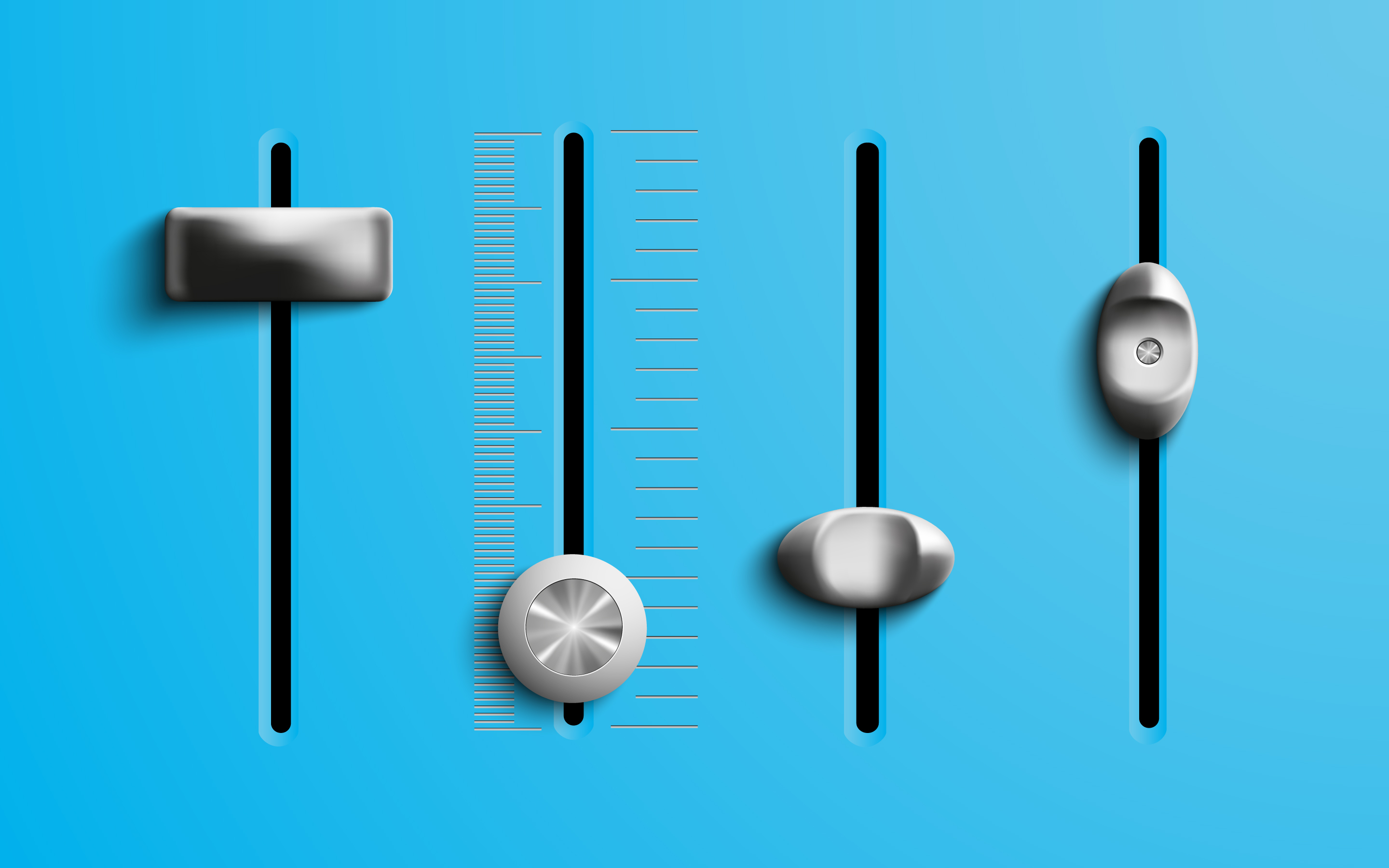Multi channel marketing: How to be everywhere at once

It’s becoming increasingly difficult for modern marketers to stay one step ahead of consumers.
The average customer has much more control over their purchasing process than they once did. Thanks to the proliferation of new channels, customers have more choices than ever when it comes to accessing information. They can connect with you on their smartphone, in person, through a website, on social media – the list goes on.
Today, if your company doesn’t have a multi channel marketing strategy, you’re going to struggle to keep up. Don’t believe us? Just look at the numbers:
- 89% of consumers use mobile applications to view content online.
- The average customer has about 4.3 devices with internet connections.
- 90% of consumers move between at least 2 screens each day.
In simple terms, your leads are multi-tasking masters. If you want to get their loyalty (and their cash), you can’t just expect them to come and find you. Instead, you’ll need to make sure that you’re active wherever your audience might be. The more relevant platforms you use to share your marketing message, the more people you’ll connect with. The bigger your audience of interested consumers, the higher your chances of sales. Makes sense, right?
Of course, defining and building well-optimised multi channel marketing campaigns can be tough. If you’re not properly prepared, you’re more likely to end up with wasted budget and a damaged reputation than a powerful online presence.
Fortunately, we’re here to help.

What is multi channel marketing? The benefits of being everywhere
Multi channel marketing is the process of promoting and selling anywhere your customers might be. It’s more than just an advertising strategy. It’s about bringing sales opportunities to various channels, all the way from messaging apps, to social media. Effective multi channel marketing solutions give you a footprint in the places where your audience already spend their time. They also offer an opportunity to respect platform usage data, purchasing patterns, and consumer choice.
Even if you have the world’s best product, your business is sure to struggle if you’ve got nothing but a website to attract shoppers. The best brands know to sell to their customers wherever they consume content. This means using multi channel marketing services to access social media, connect offline, and nurture leads.
When establishing your multi channel marketing definition, it’s worth noting that multi channel and omni channel aren’t the same thing. Omni channel selling goes beyond the multi channel approach by connecting the various touch-points you use into a single experience. A multi channel marketing strategy is just about being active in the right places. A few hallmarks of success include:
- Having clearly-defined user personas: You need to know your audiences to understand where they spend their time. The more data you can collect about your target audience, the more effective your multi channel marketing campaigns will be. Use everything from surveys to analytical tools to gather useful information about your would-be customers. Then, use that information to build your multi channel marketing definition.
- Bringing your channels together: Multi channel marketing doesn’t require you to connect your platforms, but it makes sense to link whatever you can with a consistent tone of voice and image. Consistency helps to make your company more credible. It shows your customers that you remain true to your values and identity wherever you are.
- Measuring your results: With a multi channel marketing strategy in play, you’ll need to work extra-hard to get the best results. Closed-loop analytics will help you determine which channels are the most effective, which influence other channels, and which platforms you can remove from your campaign.

Connect the dots: Defining your multi channel marketing strategy
Multi channel marketing is all about using the right channels to connect to the ideal customers. Also referred to as “cross channel marketing”, multi channel solutions make it easier for your clients to complete their conversions using whatever platform or device they prefer. In a world where customer experience is king, brands with a multi channel marketing strategy achieve an 89% retention rate.
There are plenty of channels for businesses to take advantage of today, from offline stores to websites, PPC, direct mail, email, and social media. Interestingly, even though 72% of customers prefer a multi channel marketing approach, some companies are still nervous about using one. Here are a few tips to get you started.
1. Know your core message
Today’s consumers are overwhelmed by marketing messages every day. There’s so much noise in the marketplace that if you don’t find a way to stand out, you might disappear. A strong message is driven by a solid brand identity with a good vision and a great set of values.

Your message will help to establish your brand personality and differentiate you from your competitors. To find out what your multi channel marketing message should be, all you need to do is listen to your customers. Look at their pain points and let them know that your solution is better than anything else on the market. Once you have your message, you can create a strategy that’s tailored to each of your chosen platforms. For instance, Old Navy shows the same attitude on their website as they do on their Twitter page. They’re fun, laidback and friendly.
2. Analyse your customer data
You’d be surprised how many marketers try to rely on guesswork when establishing their business. Rather than just assuming you know where your customers are, build systems to track your interactions. The best multi channel marketing campaigns don’t simply push companies onto every available platform. Relevancy is key in the marketing world, so find out which channels your clients use.
A dashboard like Google Analytics shows you where your incoming traffic comes from. With this tool, you might discover that most of your leads come from paid ads or your Twitter page. Either way, knowing where your audience finds you helps you optimise your multi channel marketing solutions accordingly.
3. Choose platforms with care
One of the biggest mistakes companies make is assuming that multi channel marketing simply means spreading your content across as many platforms as possible. New brands often assume that if they want to have a presence online they must be active on Twitter and Facebook. However, there are dozens of channels out there today, and they won’t all be relevant to your organisation.

Contrary to popular belief, multi channel marketing campaigns aren’t about being active everywhere. Instead, it’s about making sure you’re in the right place. For instance, a B2B company with a sophisticated personality might thrive on LinkedIn and in industry events, but struggle on Instagram. Look at your brand identity and choose the platforms that make sense. Oreo has a great presence on sites like Twitter, Facebook, and Instagram, but its fun-loving attitude wouldn’t work well at a corporate conference.
4. Go cross-channel
Cross channel marketing is one of the best ways to make the most of your multi channel campaigns. Start by creating a single campaign, then think about how you can tweak it to run independently on everything from Facebook to Snapchat. For example, on Snapchat, you might advertise your new product with a branded filter like Quaker Oats did:

On Facebook, you could use a live video, while in person you can give away tasters and freebies. Multi channel marketing is a great way to make the most of the best parts of various platforms. It helps you to cover all your bases. That way, whatever platform your customers prefer to use, you’re there and ready to connect with them.
5. Put experience first
You may have noticed that we’ve mentioned ‘experience’ a few times in this article. That’s because multi channel marketing campaigns address the important concept of ‘CX’. When you interact with your clients on their chosen channels, you show them that you’re just like them. This helps to promote loyalty in your followers.
Make sure that all your channels work seamlessly and focus on exceptional quality. Remember, it’s easy to let the value of your content slide when you have numerous channels to focus on, but this can be a recipe for disaster. Your email marketing needs to live up to the standards you set on social media and vice versa. If it helps, you can always invest in a multi channel marketing services team to support you. That way, you have one group of experts focusing on promotion, while you handle the other parts of your company.
3 Magnificent multi channel marketing examples
While 95% of marketers say they understand the benefits of multi channel marketing, 51% struggle to react to new devices, trends, or channels.
Multi channel marketing is more crucial than ever as customers begin to expect and demand more from their favourite brands. If your customer can’t find you on their favourite platform or struggles to interact with your company on their chosen device then they won’t waste time looking for a solution. Instead, they’re more than happy to jump to another company. Multi channel marketing is no longer a nice-to-have part of an online strategy. It’s essential to your success. Here are just 3 companies that have seen the benefits of multi channel marketing for themselves.
1. Mercedes Benz
As multi channel marketing examples go, you can often find great examples with automobile companies. Mercedes Benz has a multi channel marketing strategy that spans across social, digital, and offline strategies. The company used their “Generation Benz” online community to create customer profiles for each marketing channel.

By analysing their existing data, Benz discovered that their CLA model campaign should have a traditional marketing edge. As such, they invested in a Super Bowl ad with Kate Upton and Usher. At the same time, the brand created a microsite and built awareness across their social channels with a #CLATakeTheWheel hashtag. The result of bringing multiple channels together was the best product launch for Mercedes Benz in 20 years.
2. Starbucks
Another company to mention for great multi channel marketing examples is Starbucks. Their “Frappuccino Happy Hour” campaign tapped into the advantages of cross-channel advertising to earn results. To drive attention towards the company, Starbucks both updated their website and created a TV commercial. Using similar imagery across all channels, they maintained a familiar image, while making the most of various platforms.
Starbucks also sent out regular messages through both their smartphone app and social media pages to encourage people to sign up for their loyalty programme. One part of their social media campaign involved creating profiles specifically for the Starbucks Frappuccino entity.

The great thing about Starbucks’ multi channel marketing solutions is that each channel maintained the same personality, without copying and pasting content. The multi channel strategy meant that the coffee brand could reach as many potential new customers as possible, fast.
3. Under Armour
Popular fitness brand Under Armour also knows how valuable a multi channel marketing strategy can be. It not only has a social presence and influencer marketing strategy. Under Armour also invests in in-store content, interactive offline engagement, and an app to connect their fitness community.
The lifestyle focused application delivers a personalised experience for each customer based on their data. When you sign up to install the app, the company asks you for useful info like your athletic inspiration and workout history. Under Armour even partnered with other apps to gather useful information about their clients’ geographical location and fitness behaviour. Other useful components include the UA Play application which allows users to scan barcodes in store to learn about products.

The Under Armour multi channel marketing approach increases traffic by creating a memorable experience on every platform. It shows us the value of cross channel marketing and connecting with customers in as many ways as possible.
Easy ways to improve your multi channel marketing campaigns
Ultimately, multi channel marketing is all about giving your customers a choice in how they connect with you. By ensuring that you’re available wherever your customers are, you open yourself up to as many conversion opportunities as possible. However, you shouldn’t just jump into every channel at once without a plan.
The benefits of cross channel marketing come from diverse content, consistency, and focus. Here are just a few tips on how you can enhance your multi channel marketing campaigns.
1. Use the tools available
While you don’t have to invest in a new tech infrastructure to make the most of your multi channel marketing strategy, it can help. If you want to keep up with consumers as they bounce across various channels, then you need some support. Automation tools allow you to identify and qualify leads faster, find trigger events that suggest a lead is ready to engage, and send messages out to the right people at the best times.
There are various tools out there to choose from, and everyone has their own opinion on which is best. Of course, if you don’t have the time to monitor your own tools, you can ask your multi channel marketing services team to do it for you.
2. Become a data diver
In a complicated marketing environment, nothing is more valuable than data. The right information forms the foundation of your multi channel marketing strategy. While information is critical – not just any old data will do. Make sure that the insights you’re getting are relevant, authentic, and constantly updated.
Also, make sure that you’re not missing out on useful data inside your company. Sometimes, a problem with integrated marketing can mean that your data lives in silos across your organisation. Get rid of those islands and create a centralised space where you can parse information into personas, profiles, predictive models, and anything else that might be useful to your company.
3. Connect the dots
In multi channel marketing campaigns, every platform you use will be its own separate entity. However, that doesn’t mean that they should be completely disconnected. While it’s important to embrace the benefits of each channel, and make sure that your campaigns work correctly offline, online, and on mobile devices, don’t overlook the connections.
Set up your metrics for each separate channel, then keep an eye on how your platforms work seamlessly together. You may find interesting parallels between channels that have an impact on your marketing mix. Alternatively, you might discover that you can get more leads if you fuse your campaigns together into an omni channel marketing approach.
4. Test everything
Since data and multi channel marketing go together hand-in-hand, it makes sense that testing would be an important part of your strategy. Testing helps you to determine which of the avenues available today you should choose for your campaigns. Like we already mentioned above, there are a lot of channels out there, and they can’t all be a perfect fit. Using the right tests can give you a recipe for multi channel marketing success.
Check your analytics to find out where most of your leads come from. Once you know where you’re getting customers, try out different copy and content to push for better results. Remember, different channels work in unique ways. Don’t try to use the data from Facebook to inform your LinkedIn campaign.
5. Personalise your cross-channel campaigns
Finally, in today’s competitive and fast-paced business world, consumers are sick of dime-a-dozen marketing messages. They want a marketing strategy that appeals to their personal interests and values. Make sure that you carefully alter your marketing messages to not only suit the audiences on each of your channels, but also the distinct benefits of the channels themselves.
For instance, if you know that most of your LinkedIn customers are B2B buyers, make sure that you write plenty of articles that would support a professional customer. On the other hand, if you’re appealing to younger customers on Snapchat, branded filters and fun posts might be a great way to show your playful side.
As you begin to link your multi channel marketing campaigns together, you’ll gather data that allows you to personalise even further. For instance, you could use past purchasing history to give product recommendations to your clients.

The benefits of multi channel marketing: Why is it so important?
Now that modern audiences are more connected than ever before, multi channel marketing helps you to switch between devices and channels as seamlessly as they do. That’s an important power to have when you consider just how difficult it is to keep pace with all the purchasing trends that have emerged in recent years.
While cross-channel marketing and multi channel marketing campaigns aren’t a new concept, they are growing more important. Evolving customer behaviour and a focus on ‘experience’ above all else has ensured that brands really need to nail this marketing area.
The key to success for most companies will be remembering that multi channel marketing isn’t just about signing up for different social media platforms and getting their logo in as many places as possible. Organisations will also need to tailor the messages they send across channels if they want to make an impact. Remember, your customer has a choice. They can opt to block you on a channel if you don’t engage them properly, or help you push your company towards success.
When it comes down to it, multi channel marketing helps you to communicate with and sell to customers. Whether you like it or not, the days when marketing focused on a single channel are over. In fact, we’re just at the beginning of a new digital revolution, so you can expect even more channels to emerge as technology evolves. In the future, you might have to think about virtual reality, wearables, and AR when connecting with your customer too.
Whatever happens, the sooner you adapt your message to fit the right mediums online and off, the easier it will be to engage and keep your customers.
If you enjoyed this article, you might enjoy these too:
— Omni channel marketing and how it benefits your brand
— Can you help me? Why all brands need a knowledge base
— How to create a marketing strategy that simplifies campaigns











